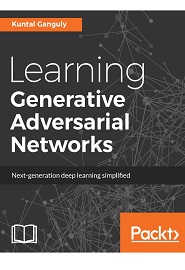
English | 2017 | ISBN: 978-1788396417 | 180 Pages | EPUB, PDF (conv) | 18 MB
Build image generation and semi-supervised models using Generative Adversarial Networks
Generative models are gaining a lot of popularity among the data scientists, mainly because they facilitate the building of AI systems that consume raw data from a source and automatically builds an understanding of it. Unlike supervised learning methods, generative models do not require labeling of the data which makes it an interesting system to use. This book will help you to build and analyze the deep learning models and apply them to real-world problems. This book will help readers develop intelligent and creative application from a wide variety of datasets, mainly focusing on visuals or images.
The book begins with the basics of generative models, as you get to know the theory behind Generative Adversarial Networks and its building blocks. This book will show you how you can overcome the problem of text to image synthesis with GANs, using libraries like Tensorflow, Keras and PyTorch. Transfering style from one domain to another becomes a headache when working with huge data sets. The author, using real-world examples, will show how you can overcome this. You will understand and train Generative Adversarial Networks and use them in a production environment and learn tips to use them effectively and accurately.
What You Will Learn
- Understand the basics of deep learning and the difference between discriminative and generative models
- Generate images and build semi-supervised models using Generative Adversarial Networks (GANs) with real-world datasets.
- Tune GAN models by addressing the challenges such as mode collapse, training instability using mini batch, feature matching, and the boundary equilibrium technique.
- Use stacking with Deep Learning architectures to run and generate images from text.
- Couple multiple Generative models to discover relationships across various domains
- Explore the real-world steps to deploy deep models in production
Resolve the captcha to access the links!